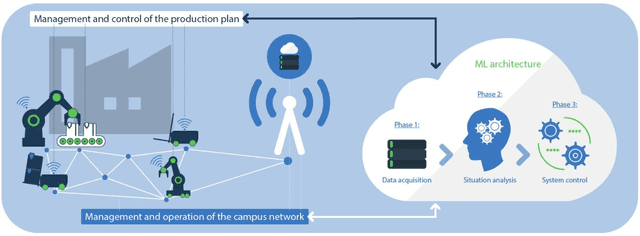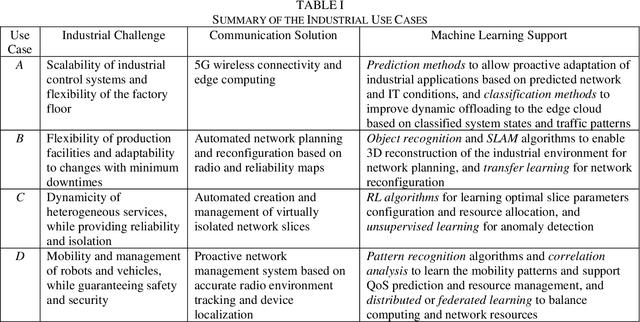Nikolaj Marchenko
Augmented Reality-Empowered Network Planning Services for Private Networks
Jun 24, 2022



Abstract:To support Industry 4.0 applications with haptics and human-machine interaction, the sixth generation (6G) requires a new framework that is fully autonomous, visual, and interactive. In this paper, we propose a novel framework for private network planning services, providing an end-to-end solution that receives visual and sensory data from the user device, reconstructs the 3D network environment and performs network planning on the server, and visualizes the network performance with augmented reality (AR) on the display of the user devices. The solution is empowered by three key technical components: 1) vision- and sensor fusion-based 3D environment reconstruction, 2) ray tracing-based radio map generation and network planning, and 3) AR-empowered network visualization enabled by real-time camera relocalization. We conducted the proof-of-concept in a Bosch plant in Germany and showed good network coverage of the optimized antenna location, as well as high accuracy in both environment reconstruction and camera relocalization. We also achieved real-time AR-supported network monitoring with an end-to-end latency of about 32 ms per frame.
Leveraging Machine Learning for Industrial Wireless Communications
May 05, 2021


Abstract:Two main trends characterize today's communication landscape and are finding their way into industrial facilities: the rollout of 5G with its distinct support for vertical industries and the increasing success of machine learning (ML). The combination of those two technologies open the doors to many exciting industrial applications and its impact is expected to rapidly increase in the coming years, given the abundant data growth and the availability of powerful edge computers in production facilities. Unlike most previous work that has considered the application of 5G and ML in industrial environment separately, this paper highlights the potential and synergies that result from combining them. The overall vision presented here generates from the KICK project, a collaboration of several partners from the manufacturing and communication industry as well as research institutes. This unprecedented blend of 5G and ML expertise creates a unique perspective on ML-supported industrial communications and their role in facilitating industrial automation. The paper identifies key open industrial challenges that are grouped into four use cases: wireless connectivity and edge-cloud integration, flexibility in network reconfiguration, dynamicity of heterogeneous network services, and mobility of robots and vehicles. Moreover, the paper provides insights into the advantages of ML-based industrial communications and discusses current challenges of data acquisition in real systems.
 Add to Chrome
Add to Chrome Add to Firefox
Add to Firefox Add to Edge
Add to Edge